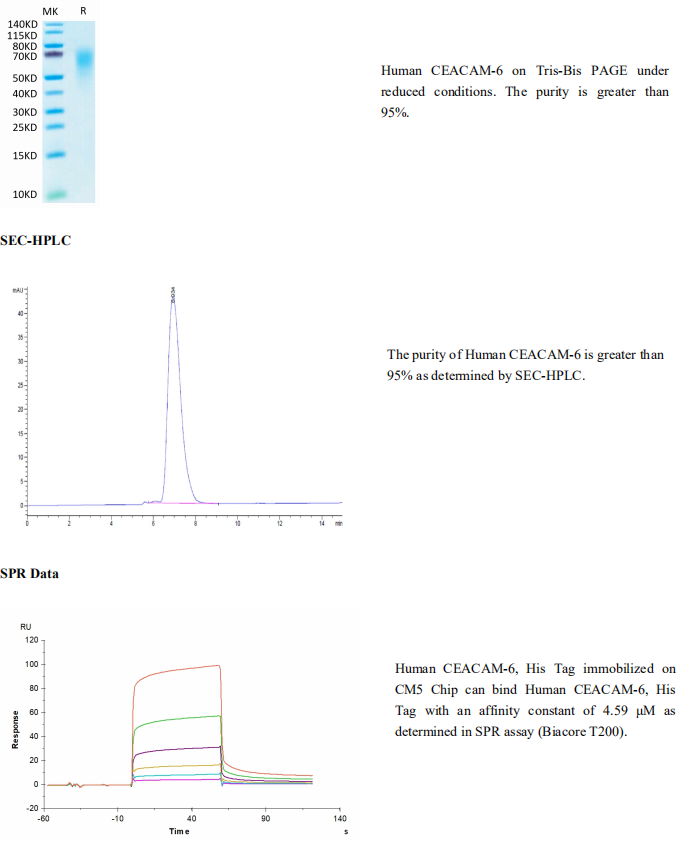Carcinoembryonic antigen-related cell adhesion molecule 6 (CEACAM-6), previously called nonspecific crossreacting antigen (NCA) or CD66c, is one of seven human CEACAM family members within the immunoglobulin superfamily. In humans, CEACAMs include type I transmembrane proteins (CEACAM-1, -3, and -4) and GPI-linked molecules (CEACAM-5 through -8). There is no human CEACAM-2. Human CEACAM-6 is a 90 kDa, GPI-linked membrane protein that contains a 34 aa signal sequence, a 286 aa extracellular domain (ECD), and a 24 aa hydrophobic C-terminal propeptide. The GPI membrane anchor is attached at the C-terminus following cleavage of the propeptide. CEACAM-6 contains one N-terminal V-type Ig-like domain (N domain), followed by two C2-type Ig-like domains. It shows considerable glycosylation, including (sialyl) LewisX, which mediates binding to E-selectin, galectins and some bacterial fimbrae. Mature human CEACAM-6 shows 84%, 85%, 80%, 87% and 51% aa identity to the equivalent extracellular regions of human CEACAMs 1, 5 (CEA) and 8, rhesus CEACAM-2, and bovine CEACAM-6, respectively. CEACAM-6 is expressed by granulocytes and their precursors. Activation enhances surface expression by mobilizing CEACAM-6 from storage in azurophilic granules. It often shows aberrant expression in acute lymphocytic leukemias. CEACAM-6 is also expressed in epithelia of various organs and is upregulated in pancreatic and colon adenocarcinomas and hyperplastic polyps.
高纯度、高活性、低内毒素、高批间一致性
产品数据
Tris-Bis PAGE

-25 ~ -15℃保存,收到货之后有效期1年。 复溶后, 无菌条件下,-85 ~ -65℃保存,3个月有效期。





